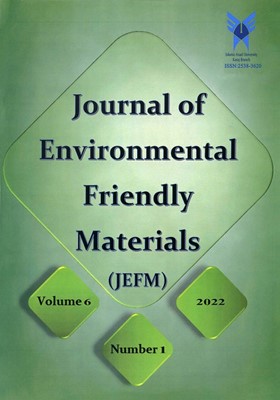-
-
List of Articles
-
Open Access Article
1 - Editorial
-
Open Access Article
2 - New Approach to Assessing of High-Strength SG Cast Iron for Environmentally Clean Energy Technology
M Sadeghi -
Open Access Article
3 - Effect of Preheat Variables on Mechanical Properties Weld Zone Dissimilar joint of the MO40 to St-37 by GMAW/GTAW
M. R Tavighi A Asaadi Zahrai M Ghanbari Haghighi B Karbakhsh Ravari -
Open Access Article
4 - The Effect of the Amount of Ferrous Sulfate in the Electrolyte on the Hardness of the Ni-Fe Alloy Coating Generated by Electrical Deposition Method
A Aghajafari M Noghani M Saghafi B Bostani -
Open Access Article
5 - Advanced Manufacturing and Eco-friendly Welding Between AISI 409 Finned to High Pressure T22 Boiler Tube by HFRW Clean Energy
M Sadeghi H Sabet S. H Razavi -
Open Access Article
6 - Analysis of the Free Edge Effect of a Composite Laminate under Axial Tensile Load According to the Environmental Properties of the Composite Materials
S Ebadi E Anbarzadeh -
Open Access Article
7 - Investigation of Dental Implant’s Titanium Surface Hydrophilicity Effect on Biocompatibility and Osseointegration
B Mohammadi A. G Dezfuli E Anbarzadeh A. A Malek Altejari -
Open Access Article
8 - Joining of Ti-6AL-4V to AISI 304 Stainless Steel using Laser Spot Welding with Circular Technique
M Rafi H Sabet V Abouei Mehrizi A Anbarzadeh -
Open Access Article
9 - A Brief Study of Magnesium-Zinc Alloy Scaffolds Performance
Z. S Seyedraoufi
-
The rights to this website are owned by the Raimag Press Management System.
Copyright © 2021-2025







